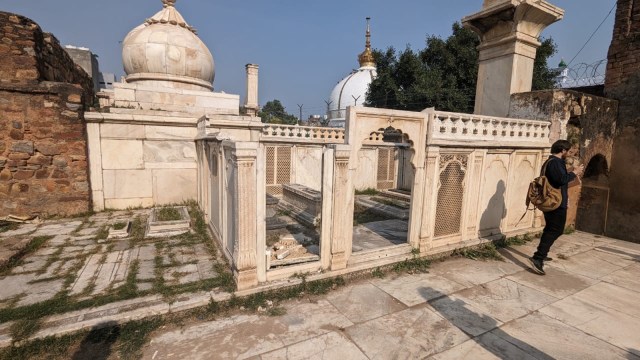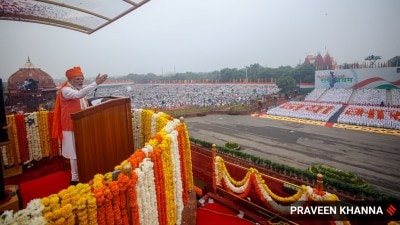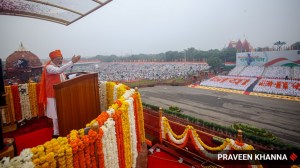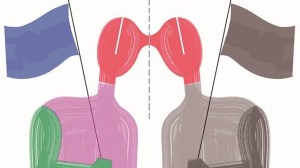Vandals target Zafar Mahal, knock down screen enclosing emperor’s ‘empty grave’
According to sources from the ASI, renovation of the structure was already in the pipeline, adding estimates were being drawn up by the authority in this regard.
 (Right) Inside the Zafar Mahal; (Left) a closer look at the part that was damaged, Bahadur Shah Zafar’s ‘empty grave’ can be seen on the right. (Express File Photo)
(Right) Inside the Zafar Mahal; (Left) a closer look at the part that was damaged, Bahadur Shah Zafar’s ‘empty grave’ can be seen on the right. (Express File Photo)Unknown vandals allegedly destroyed a part of Zafar Mahal, a 19th-century structure, in Mehrauli earlier this week. The Archaeological Survey of India (ASI) attributed the damage to “anti-social elements” who purportedly kicked in a jali (lattice) screen situated to the left of the entry to the premises.
Notably, the screen surrounds what is considered the “empty grave” of Mughal emperor Bahadur Shah Zafar, who had earmarked the spot for his burial before he was exiled to Burma, now Myanmar, by the British.
The monument in-charge has filed a complaint with the local police about the damage, said ASI officials. However, the local police stated that they have not received any complaint or FIR from the ASI.
According to sources from the ASI, renovation of the structure was already in the pipeline, adding estimates were being drawn up by the authority in this regard. The cost of repairing the jali-work will now be added to this, officials said. As of now, there is no clarity on when the estimates will be finalised and renovation work will start.
Conservation activist Sohail Hashmi raised concerns about the inadequate protection to such historical sites. “Even if they are protected monuments, they have one guard in charge of several monuments scattered across large distances,” Hashmi stated. He said local residents often encroach upon these sites for various activities, from gambling to drug use, emphasising on the urgent need for enhanced security measures.
Hashmi further highlighted the precarious state of historical sites in Delhi. “In 1920, historian Zafar Hasan meticulously recorded 3,000 historical sites, but an audit by the ASI in 2010 revealed that 1,000 of these sites had vanished over the years,” he said.
Considered the “last monumental structure by the Mughals”, the Zafar Mahal was constructed in the late 19th century by Akbar Shah II after his son was released from prison in Allahabad after he attempted to assassinate the then British Resident. By the latter half of the century, Akbar Shah’s successor Bahadur Shah II, or Bahadur Shah Zafar, built an imposing gate leading to the palace following which the premises began to be called Zafar Mahal.
The complex is said to host a variety of structures from across eras of Delhi’s history, including a tomb belonging to the Delhi Sultanate period, Mughal-era structures such as Hathi Pole and Moti Masjid, and a fireplace hinting at British influence.







